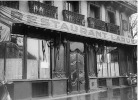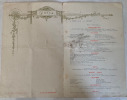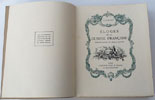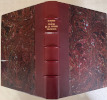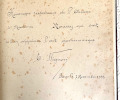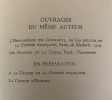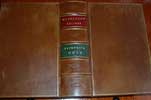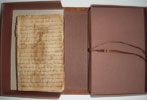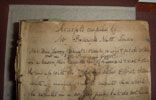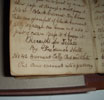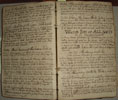A COLLECTION OF ORDINANCES AND REGULATIONS
FOR THE GOVERNMENT OF THE ROYAL HOUSEHOLD, MADE IN DIVERS REIGNS. FROM KING EDWARD 111, TO KING WILLIAM AND QUEEN MARY. ALSO RECEIPTS IN ANCEINT COOKERY. ( A fine illustrated device of the Society of Antiquaries' shield.) PRINTED FOR THE SOCIETY OF ANTIQUARIES BY JOHN NICHOLS: SOLD BY MESSIEURS WHITE AND SON; ROBSON; LEIGH AND SOTHEBY; BROWNE; AND EGERTON'S. MDCCXC.
SOLE EDITION: 4to. 296x240 mm. 1fep. Title page. [1] iii Council of the Society. [1] v-xix Introduction. [1] xxi-xxii Table. (1) [1] 3- 473. 274-276 List of 214 dishes. 1fep. 1/4 dark brown leather spine and tips. Marbled boards. The text block is nice and clean
- A precursor organisation, the College of Antiquaries, was founded circa 1586, and functioned largely as a debating society until it was forbidden to do so by King James I in 1614. The first informal meeting of the modern Society of Antiquaries occurred at the Bear Tavern on The Strand on 5 December 1707. This early group sought a charter from Queen Anne for the study of British antiquities; its projected ventures included a series of 35 books to be issued. The formalisation of proceedings occurred in 1717 with the first minutes at the Mitre Tavern, Fleet Street, dated 1 January 1718. Those attending these meetings examined objects, gave talks, and discussed theories of historical sites. Reports on the dilapidation of significant buildings were also produced. The society was also concerned with the topics of heraldry, genealogy, and historical documents. In 1751, a successful application for a charter of incorporation was sought and granted. The society began to gather large collections of manuscripts, paintings, and artefacts. The acquisition of a large group of important paintings in 1828 preceded the establishment of the National Portrait Gallery by some 30 years. During the reign of Henry V111 a new set of rules were passed in 1526 which are now known as the Ordinances of Eltham and presented in public as a serious attempt to reform the Tudor Court. They set out in detail how the court should be organised and run. In particular, they attempt to prevent members of the court and its servants from profiting from their positions. The Ordinances even attempt to control what happens to the remnant of spent candles as a way of ensuring control of expenditure on the court. They also make a point of seeking to exclude specific groups from the court, including cripples, beggars and boys. Also recorded is the diet of Henry VIII and his courtiers. With up to 1000 people attending the monarch. All aspects of life had to be strictly controlled, these included making provision about who could enter the King's bed chamber to who could keep dogs and when you could play cards. These rules were published in a series of ordinances and regulations, covering pages 137-241 and onwards. Amongst the incredibly detailed instructions are also accounts of what was eaten each day by the King and different levels of courtiers. As can be seen from these extracts, bread formed a major part of the diet of the highest and lowliest members of the court.






click on image to enlarge

Antiquarian category
ref number:
11069 






